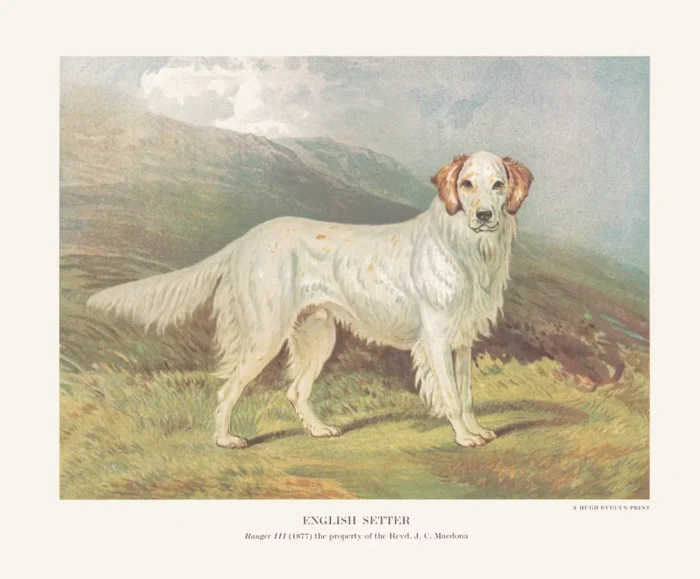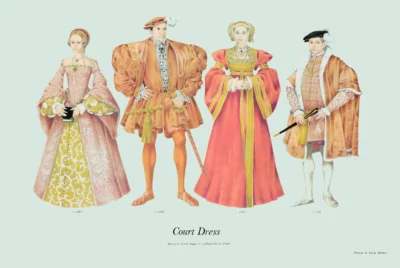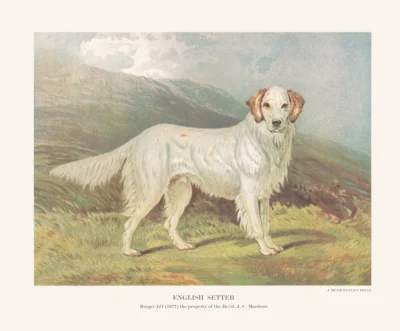English Setter (1877)
£7.50
English Setter, 1877 (scroll down for a more detailed Description)
Published 1967 by © Hugh Evelyn Limited; From a series of chromolithographs painted for The Illustrated Book of the Dog, by Vero Kemball Shaw in 1881
Original 1881 book published by Cassell, Petter, Galpin & Co (“Cassells”)
Size: 26 x 21.5 cm [10 ½ ″ x 8 ½ ″] may vary slightly from printers’ cut 50 years ago
Printed on on medium paper (c. 115 g/sm2
In stock
Description
One of the oldest breeds of gundog, traced back to the 14th century, it was developed over many years from the spaniel. “Setting dogges” is an old term used for setters that were originally called Setting Spaniels, used for finding and setting game. Evidence suggests that the English Setter originated in crosses of the Spanish Pointer, large Water Spaniel, and English Springer Spaniel, which combined to produce an excellent bird dog with a high degree of proficiency in finding and pointing game in open country. Worked on moorland, they ranged out freely in front of the hunter, quartering the ground seeking birds. When located, they would crouch (set) remaining motionless. Hunters would lay nets and on a given command the dogs would drive the birds to the nets. This continued until the late 18th century until the gun replaced the net. The first Setters were owned by the nobility and it is likely some were brought from the Continent following war. The modern English Setter owes its appearance to Mr Edward Laverack (1800-1877) who developed his own strain of the breed by careful inbreeding and selective line-breeding. The modern show-type of English Setter is frequently referred to as the Laverack-type. He was the author of the book entitled The Setter, published in 1872. This was the definitive book on the breed and was the basis for the creation of the English Setter Standard.
Additional information
| Weight | 0.0118 kg |
|---|---|
| Dimensions | 26 × 21.5 cm |





